Did you know that children who learn sight words at a young age are more likely to become strong readers as they get older? Helping your young children master toddler sight words is essential for building their vocabulary and improving their reading skills.
Learning sight words sets a strong foundation for language development and helps children recognize and understand commonly used words. By mastering sight words, toddlers can unlock the magic of reading, enhancing their communication skills and overall learning abilities.
Key Takeaways:
- Toddler sight words are important for developing strong reading and vocabulary skills.
- Learning sight words sets a foundation for effective communication and comprehension.
- Helping toddlers master sight words improves their ability to recognize and understand commonly used words.
- By incorporating sight words into their daily routine, parents can support their child’s language development and reading skills.
- With the right techniques and support, toddlers can embark on a lifelong journey of learning and discovery through reading.
What are Preschool Sight Words?
Preschool sight words are commonly used words that kids encounter frequently. These words are usually small and easy for young children to recognize. Learning preschool sight words helps children improve their vocabulary, speaking, reading, and comprehension skills. It sets a foundation for their language development and helps them become proficient readers in the future.
Here is a list of free, printable sight words for preschoolers:
| Sight Words |
|---|
| I |
| am |
| see |
| the |
| and |
| can |
| we |
| it |
| is |
| to |
Make sure to practice these sight words regularly with your preschooler to enhance their reading abilities. By familiarizing them with these common words, you are helping them lay a strong foundation for their language skills.

Importance of Learning Preschool Sight Words
Learning preschool sight words is crucial for toddlers to develop strong language skills. By mastering these sight words, children can recognize and comprehend half of a sentence, significantly enhancing their reading, speaking, and comprehension abilities. But the benefits go beyond that.
When children are familiar with sight words, they can construct meaningful sentences more easily, expanding their vocabulary and communication skills. Moreover, their ability to decode unfamiliar words improves, unlocking opportunities for independent learning and growth.
By incorporating sight words into their daily practice, parents and educators empower toddlers with a solid foundation for successful language development and reading comprehension.
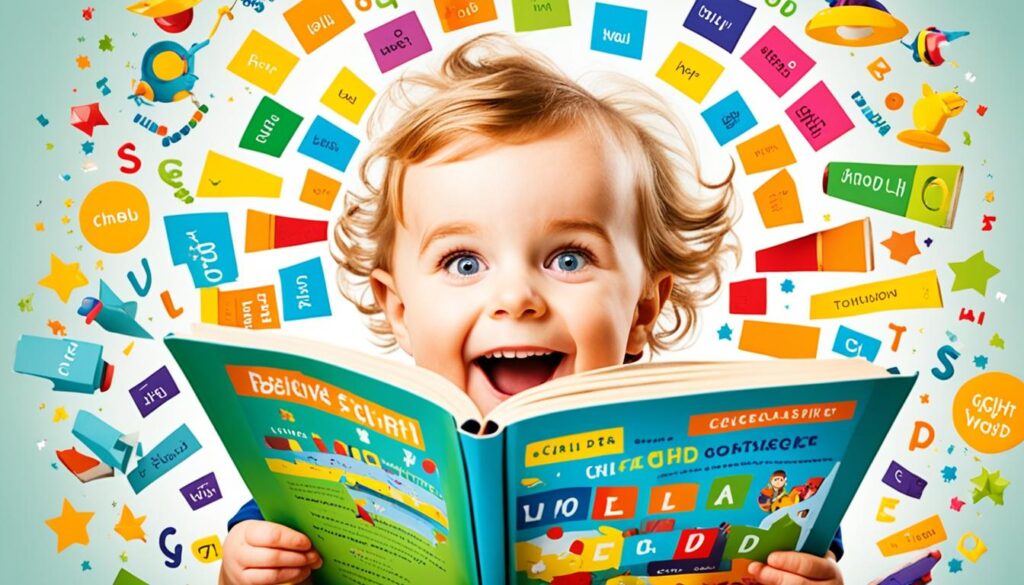
Building a Strong Language Base
Learning sight words at a young age helps build a strong language base for toddlers. By mastering these frequently used words, children gain a fundamental understanding of sentence structure, grammar, and vocabulary. This understanding sets the stage for future language and literacy development.
Enhancing Reading Skills
Mastering sight words not only improves reading fluency but also enhances a child’s ability to understand and interpret written text. When children can recognize and comprehend sight words effortlessly, they can focus their cognitive energy on understanding the overall meaning of a passage. This leads to improved reading comprehension and a more enjoyable reading experience for toddlers.
Expanding Vocabulary
Sight words play a vital role in expanding a toddler’s vocabulary. These high-frequency words are the building blocks of effective communication. By learning sight words, children gain exposure to words they encounter frequently in everyday language. This exposure helps them understand and use these words in context, allowing for more nuanced and expressive communication.
| Benefits of Learning Preschool Sight Words | Description |
|---|---|
| Enhanced Reading Skills | Mastering sight words improves reading fluency and comprehension. |
| Strong Language Base | Sight words provide a foundation for language and literacy development. |
| Expanded Vocabulary | Learning sight words exposes children to frequently used words, expanding their vocabulary. |
Advantages of Including Preschool Sight Words
Including preschool sight words in our child’s vocabulary brings numerous benefits. Sight words play a crucial role in developing their reading skills and language proficiency. Let’s dive into the advantages of incorporating preschool sight words:
Boosts Confidence and Word Recognition Skills
Preschool sight words provide young learners with a solid foundation in word recognition. By introducing these frequently used words early on, children gain confidence in reading and become more fluent readers. Familiarity with sight words allows them to quickly identify and understand these words in texts, making reading a more enjoyable and successful experience.
Promotes Reading Comprehension
Sight words serve as building blocks for reading comprehension. When children can automatically recognize and understand sight words, it becomes easier for them to comprehend the overall meaning of sentences and texts. This comprehension skill is essential for developing their overall reading abilities and facilitating a deeper understanding of what they read.
Supports Sentence Construction
Preschool sight words assist children in constructing meaningful sentences. By knowing these common words, they can combine them to create simple, coherent sentences. This ability to form sentences helps them express their thoughts more clearly and develops their communication skills both in writing and spoken language.
Enhances Learning Abilities
Preschool sight words provide children with an effective technique to decode unknown words. These words act as anchors in their reading journey, helping them make connections between known and unknown words. By leveraging their knowledge of sight words, children can use context clues and their understanding of word patterns to decipher unfamiliar words. This decoding ability enhances their overall learning process and enables them to independently tackle new vocabulary.
Expands Vocabulary and Language Skills
By including preschool sight words, children naturally expand their vocabulary. These commonly used words form the basis of a strong vocabulary, enabling children to express themselves effectively and understand a wider range of texts and conversations. A broad vocabulary not only benefits their reading and writing but also positively impacts their verbal communication skills.
| Advantages of Including Preschool Sight Words |
|---|
| Boosts Confidence and Word Recognition Skills |
| Promotes Reading Comprehension |
| Supports Sentence Construction |
| Enhances Learning Abilities |
| Expands Vocabulary and Language Skills |
These benefits highlight the value of including preschool sight words in our child’s learning journey. By focusing on their word recognition skills, reading comprehension, and language development, we lay a strong foundation for their continued success in reading and academics.
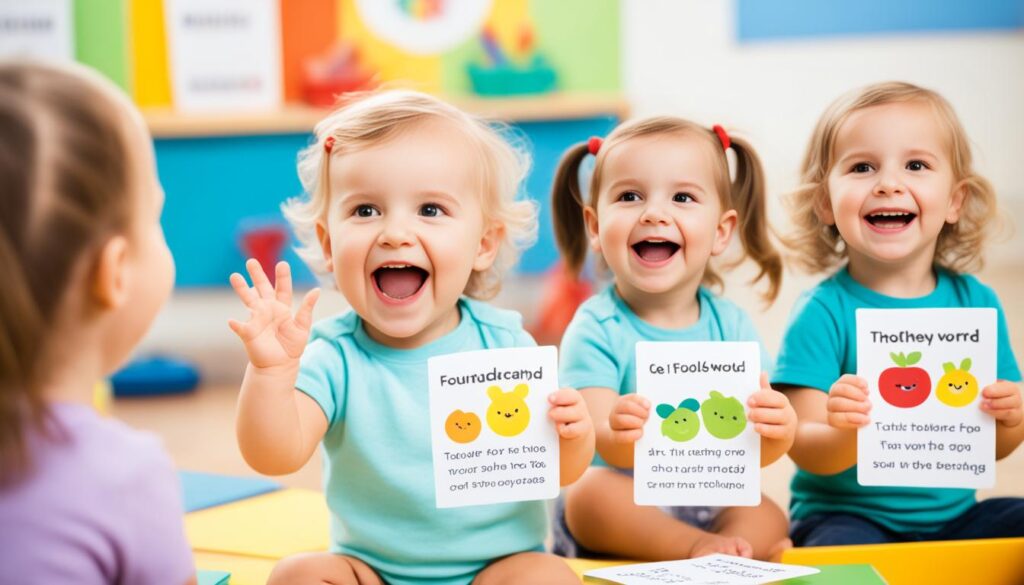
Fun Ways to Teach Sight Words to Toddlers
Teaching sight words to toddlers can be an exciting journey filled with fun and engaging activities. By incorporating interactive methods, you can make learning sight words a delightful experience for your little ones, ensuring they retain and apply their knowledge effectively.
Using Alphabet Cut-outs or Magnets
One fun way to teach sight words is by using alphabet cut-outs or magnets. Provide your child with a set of letters and encourage them to arrange the letters to form different sight words. This hands-on activity not only helps them recognize individual letters but also facilitates word-building skills.
Repeating Sight Words Regularly
Repetition is key when it comes to learning sight words. Take advantage of everyday situations and repeat sight words in a natural and playful manner. For example, while cooking together, you can ask your child to find and say out loud sight words on food labels or recipe cards. This consistent exposure to sight words enhances their recognition and recall.
Finding Sight Words in Books
Engage your child in a treasure hunt for sight words during storytime. Choose books with simple texts that contain sight words. Encourage your child to identify and point out these words while reading together. This activity not only strengthens their reading skills but also promotes word recognition and comprehension.
Playing Word Games like Pictionary
Transforming sight words into a game can make the learning experience enjoyable. Play word games like Pictionary, where your child has to draw pictures representing specific sight words while others guess the word. This interactive activity enhances their creativity, word association, and overall understanding of sight words.
Solving Word Puzzles
Word puzzles, such as word searches or crossword puzzles, are excellent tools for teaching sight words. Create your own puzzles or find printable ones online that focus on sight words. Solving these puzzles not only reinforces word recognition but also improves problem-solving skills.
Remember, incorporating hands-on activities and games is the key to making learning sight words enjoyable for toddlers. By using their senses, repeating words regularly, discovering sight words in books, playing word games, and solving puzzles, children can develop a strong foundation in sight words while having a blast.
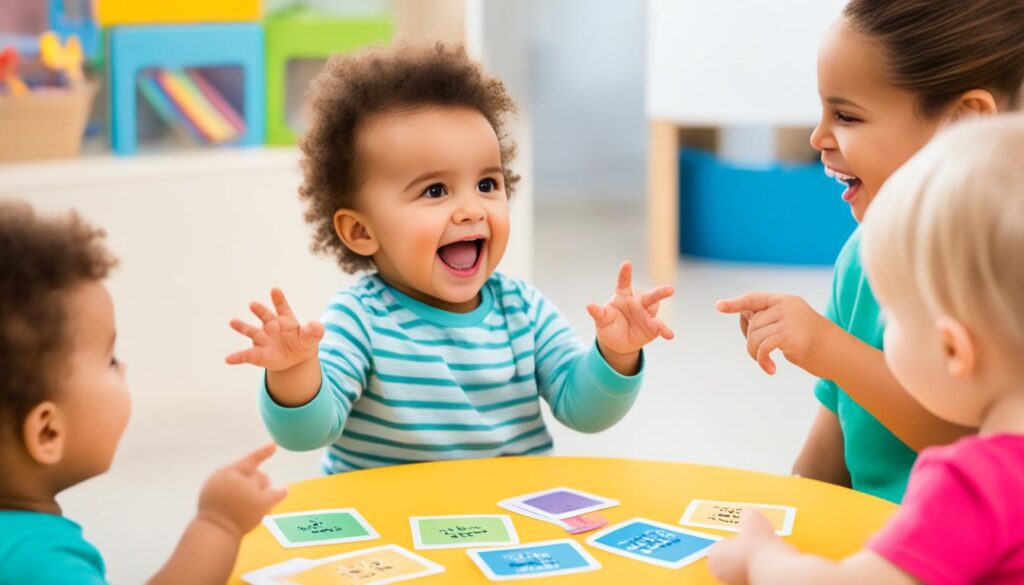
Engage your child with fun and interactive activities, creating a positive learning environment that sets them up for success in reading and language development.
Transitioning to Kindergarten Sight Words
Once toddlers have mastered preschool sight words, they are ready to embark on the exciting journey of learning kindergarten sight words. Kindergarten sight words build upon the foundation laid by preschool sight words, introducing more advanced vocabulary and increasing reading skills. Transitioning to kindergarten sight words expands children’s vocabulary and prepares them for more complex reading materials.
At this stage, children are becoming more confident in their reading abilities, and kindergarten sight words provide them with the opportunity to explore a wider range of words and concepts. These sight words are carefully selected to align with the reading level and developmental stage of kindergarten-age children, ensuring that they can continue to progress and enhance their language skills.
To make the transition to kindergarten sight words seamless and enjoyable, Osmo offers a wide range of interactive games, activities, and worksheets. These resources make learning kindergarten sight words engaging and fun while providing children with valuable practice and reinforcement. By incorporating play and technology, Osmo creates a dynamic learning environment where children can thrive.
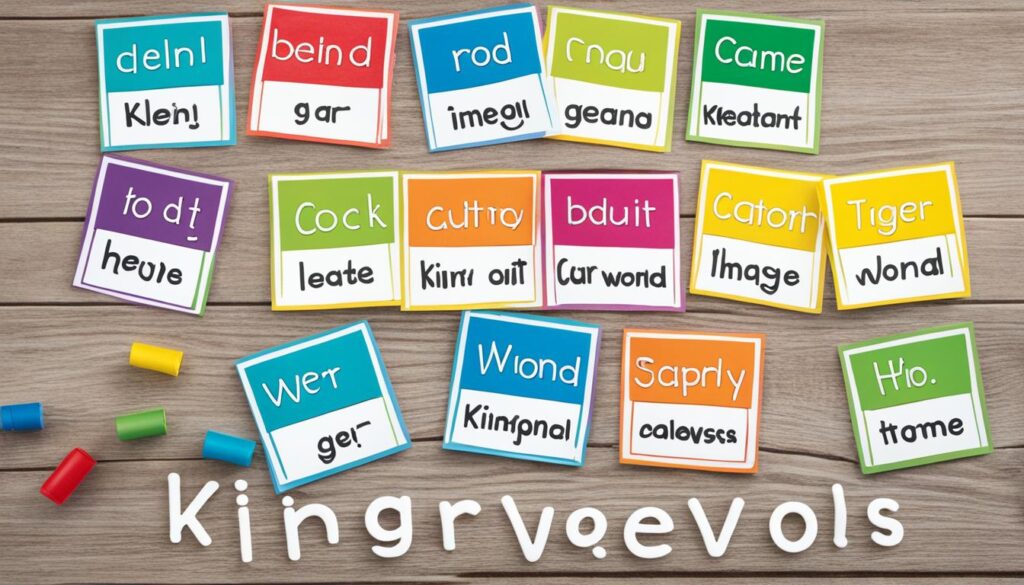
- Practice reading kindergarten sight words in a playful and interactive way
- Engage in hands-on activities that reinforce sight word recognition
- Develop essential reading and comprehension skills
Transitioning to kindergarten sight words is an important milestone in a child’s reading journey. By providing them with the right tools and resources, parents and educators can ensure that children continue to build upon their previous learning and develop a strong foundation for future success.
Tips for Teaching Sight Words to Toddlers
When it comes to teaching sight words to toddlers, it’s important to approach it with patience and creativity. Here are some valuable tips to help you make the learning process enjoyable and effective:
- Start slow and introduce a few words at a time: Toddlers have a limited attention span, so it’s best to start with a small number of sight words. This allows them to focus and grasp the words more easily.
- Engage their senses: Children learn best when multiple senses are involved. Writing sight words on cards, using touch by tracing them with shaving cream or salt, or even incorporating smell with scented markers can help reinforce their learning.
- Incorporate humor: Adding fun and humor to the learning process can make it more enjoyable for toddlers. For example, you can make up silly sentences using sight words or create a funny story where the sight words play a key role.
- Play games and activities: Turning learning into a game can greatly enhance a toddler’s engagement. Activities such as finding sight words in books, playing sight word bingo, or building sight words with colorful building blocks can make the learning experience interactive and entertaining.
- Correct mistakes immediately: When your toddler makes a mistake while reading or recognizing a sight word, it’s important to correct them gently and immediately. This helps them develop accurate word recognition and prevents the reinforcement of incorrect reading habits.
- Provide positive reinforcement: Celebrate your toddler’s successes by praising their efforts and offering rewards or incentives. This positive reinforcement encourages them to stay motivated and engaged in the learning process.
Remember, teaching sight words to toddlers is a gradual process. It’s essential to be patient, adapt to your child’s learning style, and make learning fun. With these tips, your little one will be well on their way to mastering sight words and developing strong reading skills!

Recommended Sight Word Games and Activities
| Game/Activity | Description |
|---|---|
| Alphabet Cut-Outs or Magnets | Use alphabet cut-outs or magnets to form sight words. Encourage your toddler to arrange the letters and read the words aloud. |
| Word Hunts in Books | Select books with simple sentences and ask your child to identify sight words they have learned. |
| Pictionary | Draw pictures representing sight words and have your toddler guess the word. This game enhances vocabulary and word association. |
| Word Puzzles | Create puzzles using sight words. Your child will have fun fitting the pieces together while reinforcing their sight word recognition. |
Dolch Word List and Fry Word List
In our quest to help toddlers master sight words, two commonly used lists play a significant role – the Dolch Word List and the Fry Word List. These lists serve as valuable resources for introducing sight words to children based on their age and grade level.
The Dolch Word List consists of the most frequently used words in the English language, carefully selected to aid early readers in building their vocabulary foundation. It encompasses a total of 220 words, ranging from basic pronouns and prepositions to essential nouns and verbs.
The Fry Word List, on the other hand, focuses on high-frequency words frequently encountered in various texts. Developed by Dr. Edward B. Fry, this list is categorized into multiple sets, each comprising 100 words. The Fry Word List is designed to ensure that children become familiar with the most crucial words for reading fluency.
Benefits of the Dolch Word List and Fry Word List
Both the Dolch Word List and Fry Word List offer a structured framework for selecting sight words appropriate for a child’s age and reading level. By incorporating words from these lists into their learning activities, children can build a solid foundation in reading and comprehension.
“The Dolch and Fry Word Lists provide a comprehensive collection of frequently used words that are essential for early readers. By mastering these sight words, children can significantly improve their reading fluency and expand their vocabulary.” – Reading Specialist, Sarah Smith
These lists are especially beneficial as they focus on words that children will encounter frequently in various texts, ensuring that they develop a solid repertoire of essential words. By strategically incorporating sight words from these lists into reading exercises, children can enhance their word recognition skills and improve overall reading comprehension.
| Advantages of the Dolch and Fry Word Lists | Key Features |
|---|---|
| Targeted Learning | Both lists prioritize high-frequency words, allowing children to focus on the most essential words for reading fluency. |
| Age and Grade Appropriate | The words in these lists are carefully selected based on a child’s age and grade level, ensuring that they are developmentally appropriate. |
| Building Vocabulary | By learning sight words from these lists, children can expand their vocabulary and enhance their overall language skills. |
| Reading Fluency | Mastering sight words from these lists improves reading fluency, allowing children to read with increased speed, accuracy, and comprehension. |
When incorporating sight words from the Dolch and Fry Word Lists, it’s important to consider a child’s developmental stage and ensure that the selected words align with their reading abilities. This targeted approach guarantees maximum benefit and supports children in their journey towards becoming proficient readers.

Importance of Phonics in Conjunction with Sight Words
When it comes to teaching children to read, phonics instruction and sight word recognition are two essential strategies that go hand in hand. Phonics teaches children the rules for decoding and reading most words, helping them understand the relationships between letters and sounds. On the other hand, sight words are the high-frequency words that occur most often in the English language. By combining both phonics and sight words, we can provide children with a comprehensive approach to becoming proficient readers.
The Power of Phonics
Phonics instruction empowers young learners to decode and read unfamiliar words by breaking them down into their individual sounds. By understanding the relationship between letters and sounds, children can apply their knowledge to read a wide range of words. Phonics instruction focuses on teaching letter-sound correspondences, blending sounds together to form words, and segmenting words into their individual sounds.
“Phonics instruction empowers young learners to decode and read unfamiliar words by breaking them down into their individual sounds.”
With phonics, children build a strong foundation in reading that allows them to tackle more complex words and texts. It gives them the tools to sound out words, leading to improved reading fluency and comprehension. Phonics instruction enhances both reading accuracy and reading comprehension, helping children become confident and independent readers.
The Role of Sight Words
While phonics instruction covers the majority of words, there are certain words that do not follow regular phonics rules. These words, known as sight words, are high-frequency words that children need to recognize and read instantly, without decoding them. Sight words include common words like “the,” “and,” “is,” and “you.”
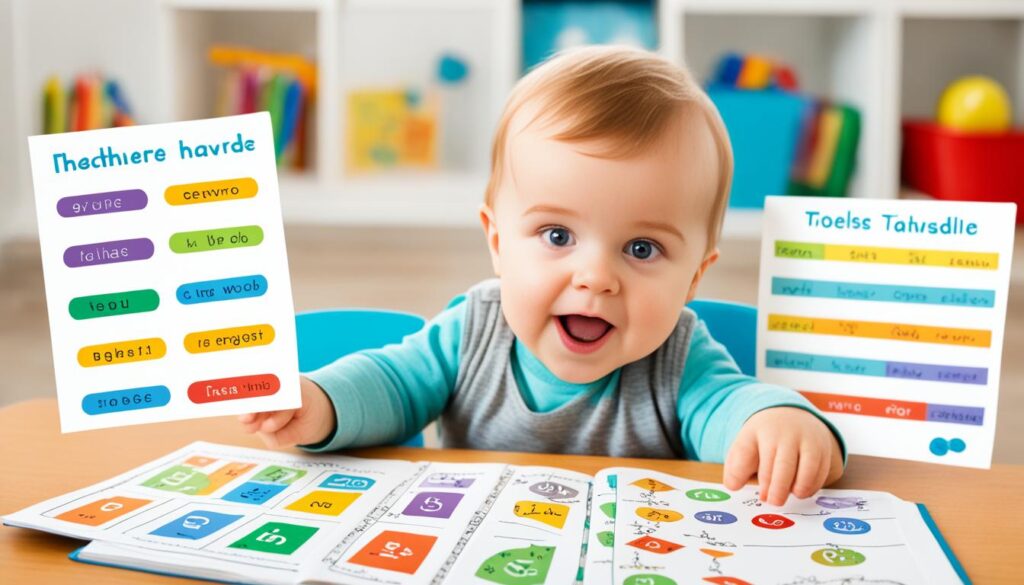
Sight words occur so frequently in texts that it’s crucial for children to recognize them at a glance to improve their reading fluency and comprehension. By memorizing sight words, children can read these words automatically, saving mental energy for decoding more complex words. Mastering sight words provides children with a strong foundation for reading and helps them become more fluent readers.
The Synergy of Phonics and Sight Words
By integrating phonics instruction with sight word recognition, we provide children with a comprehensive approach to reading. Phonics instruction teaches children the rules for decoding and reading most words, while sight words provide additional practice with words that occur frequently.
When children encounter a word that doesn’t follow phonics rules, they can rely on their sight word knowledge to read it quickly and accurately. This combination of phonics and sight words ensures that children can read a wide range of words and texts, improving their overall reading skills and comprehension.
| Benefits of Phonics and Sight Words | |
|---|---|
| Improved reading fluency | Children can read words effortlessly and smoothly, enhancing their overall reading fluency. |
| Enhanced decoding skills | Phonics instruction helps children decode unfamiliar words, while sight words provide additional words for instant recognition. |
| Expanded vocabulary | Through phonics and sight words, children build a strong vocabulary, enabling them to understand and use a wider range of words. |
| Improved reading comprehension | By combining phonics and sight words, children develop stronger reading comprehension skills, allowing them to understand texts more effectively. |
Incorporating both phonics and sight words into reading instruction ensures that children receive a well-rounded approach to learning to read. This combination equips children with the skills and strategies they need to become confident, proficient readers who can decode words accurately, fluently, and with comprehension.
Incorporating Sight Words into Daily Practice
To reinforce sight words, it’s important to incorporate daily practice into a child’s routine. Consistent practice helps children retain their knowledge of sight words and improves their reading fluency over time. By making sight word practice a part of their daily routine, parents can support their child’s language development and reading skills.
Sight Word Flashcards:
Using sight word flashcards is an effective way to engage children in sight word practice. Create flashcards with various sight words and review them with your child daily. Encourage them to read the words aloud or link them to familiar objects or images to help with comprehension.
Word Hunts in Books:
Incorporate sight word hunts while reading books with your child. Select a few sight words and ask them to find those words as they read. This activity not only strengthens their sight word recognition but also enhances their reading comprehension.
Word Games:
Play word games that involve using sight words. For example, create a word scavenger hunt by writing sight words on small pieces of paper and hiding them around the house. Challenge your child to find the words and read them aloud.
Activities Involving Sight Words:
Engage in activities that involve using sight words, such as creating sentences or stories using specific sight words. Encourage your child to use these words in their everyday conversations or while writing short sentences. This helps them reinforce their understanding and application of sight words.
By incorporating these practices into your child’s daily routine, you can further enhance their sight word recognition, reading fluency, and overall language development.

Conclusion
Mastering toddler sight words is an essential step in helping children develop their reading skills and vocabulary. By introducing preschool sight words and gradually transitioning to more advanced sight words, parents can set their children up for success in reading and communication.
Incorporating fun and engaging activities, practicing sight words regularly, and combining sight word recognition with phonics instruction all contribute to building a strong foundation for language development. With the right support and techniques, toddlers can unlock the magic of reading and embark on a lifelong journey of learning.
So, let’s nurture our little ones’ love for words by embracing the power of sight words. Together, we can help them thrive in their reading abilities and open the doors to a world filled with imagination and knowledge.
How Can Learning Shapes Help Toddlers Master Sight Words?
Learning shapes can be a useful tool in teaching toddlers sight words. Fun shape activities can engage kids and help them remember words more easily. By associating words with shapes, toddlers can improve their visual recognition and word retention skills in a playful and enjoyable way.
FAQ
What are toddler sight words?
Toddler sight words are commonly used words that kids encounter frequently. These words are usually small and easy for young children to recognize.
Why is learning preschool sight words important?
Learning preschool sight words helps children improve their vocabulary, speaking, reading, and comprehension skills. It sets a foundation for their language development and helps them become proficient readers in the future.
What are the advantages of including preschool sight words in a child’s vocabulary?
Including preschool sight words in a child’s vocabulary boosts their confidence in reading, promotes reading comprehension, helps them construct meaningful sentences, enhances their ability to decode unknown words, and improves their overall learning abilities.
What are some fun ways to teach sight words to toddlers?
Some fun ways to teach sight words to toddlers include using alphabet cut-outs or magnets, repeating sight words regularly, finding sight words in books, playing word games like Pictionary, and solving word puzzles.
How do you transition from preschool sight words to kindergarten sight words?
Transitioning from preschool sight words to kindergarten sight words can be done by building upon the foundation of preschool sight words. Osmo offers a variety of games, activities, and worksheets to help children learn kindergarten sight words in a fun and engaging way.
What are some tips for teaching sight words to toddlers?
Some tips for teaching sight words to toddlers include starting slow and introducing a few words at a time, getting the child’s senses involved, incorporating hands-on activities and games, correcting mistakes immediately, and providing positive reinforcement.
What are the Dolch Word List and Fry Word List?
The Dolch Word List consists of the most frequently used words in the English language, while the Fry Word List focuses on high-frequency words. Both lists provide a framework for selecting sight words based on a child’s age and reading level.
Why is phonics important in conjunction with sight words?
Phonics instruction and sight word recognition go hand in hand when teaching children to read. Phonics teaches children the rules for decoding and reading most words, while sight words provide extra attention to the words that occur most frequently.
How can I incorporate sight words into daily practice?
You can incorporate sight words into daily practice by using sight word flashcards, engaging in word hunts in books, playing word games, and participating in activities that involve using sight words. Consistent practice helps children retain their knowledge of sight words and improves their reading fluency over time.









